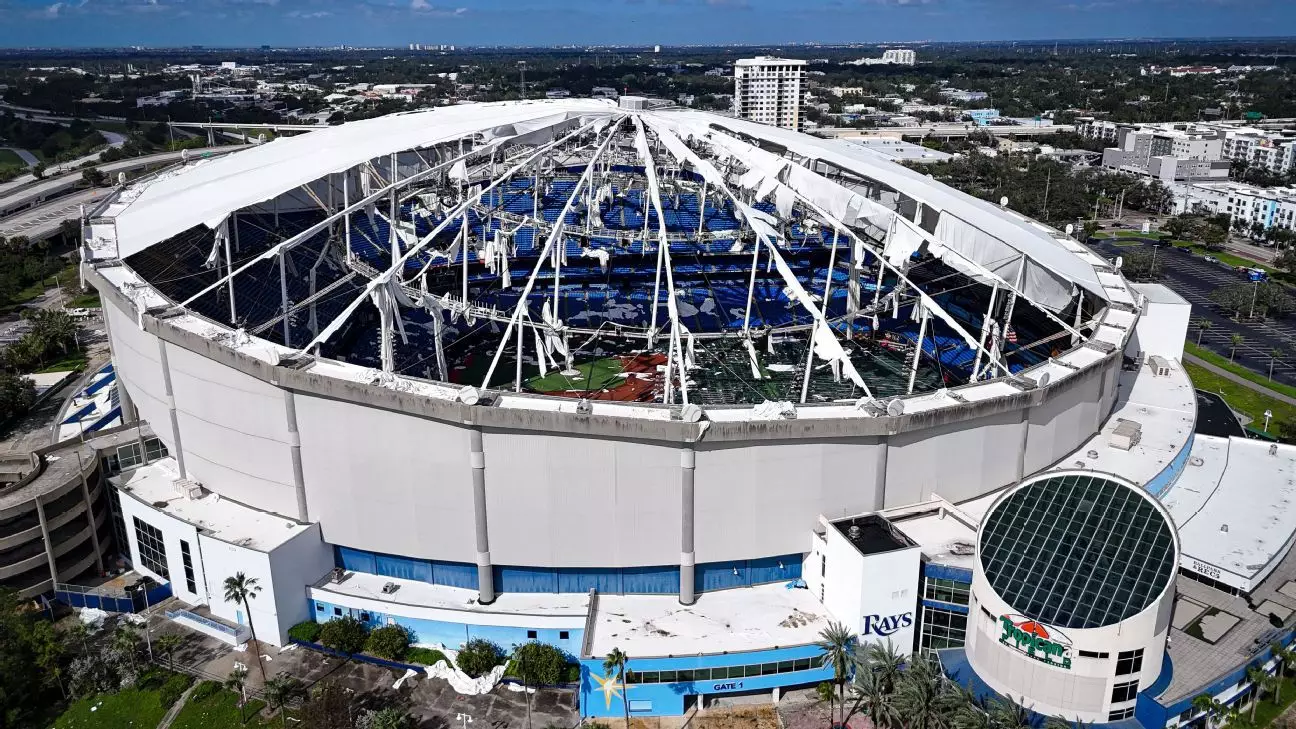The Tampa Bay Rays are navigating a period of transition marked by both challenges and opportunities. After a time of hesitation, the organization has officially endorsed a $55.7 million initiative aimed at restoring the hurricane-damaged Tropicana Field in St. Petersburg, Florida, originally slated for completion ahead of the 2026 season opener. This announcement follows the unfortunate destruction caused by Hurricane Milton, which wreaked havoc on the stadium’s structural integrity. The commitment to revitalize Tropicana Field reflects not only the team’s dedication to its current venue but also its broader aspirations in the region.
Co-president of the Rays, Matt Silverman, clarified in a recent correspondence to the city’s chief administrator that the franchise fully supports the city’s plan to rehabilitate the ballpark. This comes with the understanding that the city is responsible for financing the refurbishments under the terms of their existing agreement. While there had previously been discussions regarding the possibility of the city exiting its obligation, Silverman made it clear that the Rays ultimately seek adherence to the current arrangement. This reaffirms the team’s commitment to Tropicana Field at a time when the community itself is recovering from recent catastrophic events.
As climate-induced disasters loom, the pressure mounts on city officials not only to repair existing infrastructure but to do so expediently. Silverman stressed the urgency of commencing the reconstruction without undue delay, warning that even partial operations during the 2026 season would pose significant logistical hurdles and revenue shortfalls for the franchise. His emphatic request underscores the team’s need for certainty amid the chaos of repairs.
The condition of Tropicana Field has raised serious concerns since Hurricane Milton damaged its fabric roof on October 9, leading to water infiltration and other structural issues. Preliminary efforts to safeguard the facility from further deterioration have been underway, but the pressing question of comprehensive repairs remains. Historically, St. Petersburg has had to balance large investments with the needs of its residents still recovering from the financial impacts of both Hurricane Milton and Hurricane Helene.
Despite concerns regarding the proposed expenditure, city officials remain hopeful that insurance payouts and Federal Emergency Management Agency (FEMA) assistance could cover a significant portion of the costs. The construction timeline for these repairs will be closely monitored, with assurances from Major League Baseball that an independent adviser will oversee the process, guaranteeing adherence to the established schedule.
Beyond the immediate task of repairs, there is a larger vision unfolding for the Rays and the region as a whole. Plans are in place for a state-of-the-art, $1.3 billion stadium that would position the franchise in a prime downtown location. This new facility is a component of the ambitious, multi-billion dollar Historic Gas Plant District project—an effort not only to revitalize the area but to honor its historical significance as a once-thriving Black community that was displaced by urban development in the mid-20th century.
The project promises to integrate affordable housing and cultural amenities, including a Black history museum, creating a vibrant community hub around the proposed ballpark. This initiative signals a commitment to community enrichment and reparation for historical injustices, aligning the Rays firmly with the social needs of St. Petersburg’s residents.
As the organization prepares for the 2025 season, the Rays are set to temporarily relocate to Steinbrenner Field, the spring training facility of the New York Yankees in Tampa. While this transition may offer logistical relief, it also symbolizes a chapter of uncertainty as the team prepares for home games away from their traditional venue. Nevertheless, the sustained dialogue between the Rays and city officials, coupled with their clear intentions for future plans, fills fans and stakeholders alike with hope.
In the face of adversity, the Rays are advocating for a brighter horizon, ready to embrace a grand reopening of Tropicana Field in alignment with their long-term vision for success and community engagement in St. Petersburg. As the team embarks on this journey, their resilience reflects a broader message of revival—one that emphasizes the importance of teamwork, preparation, and a well-defined plan for the future.


Napsat komentář